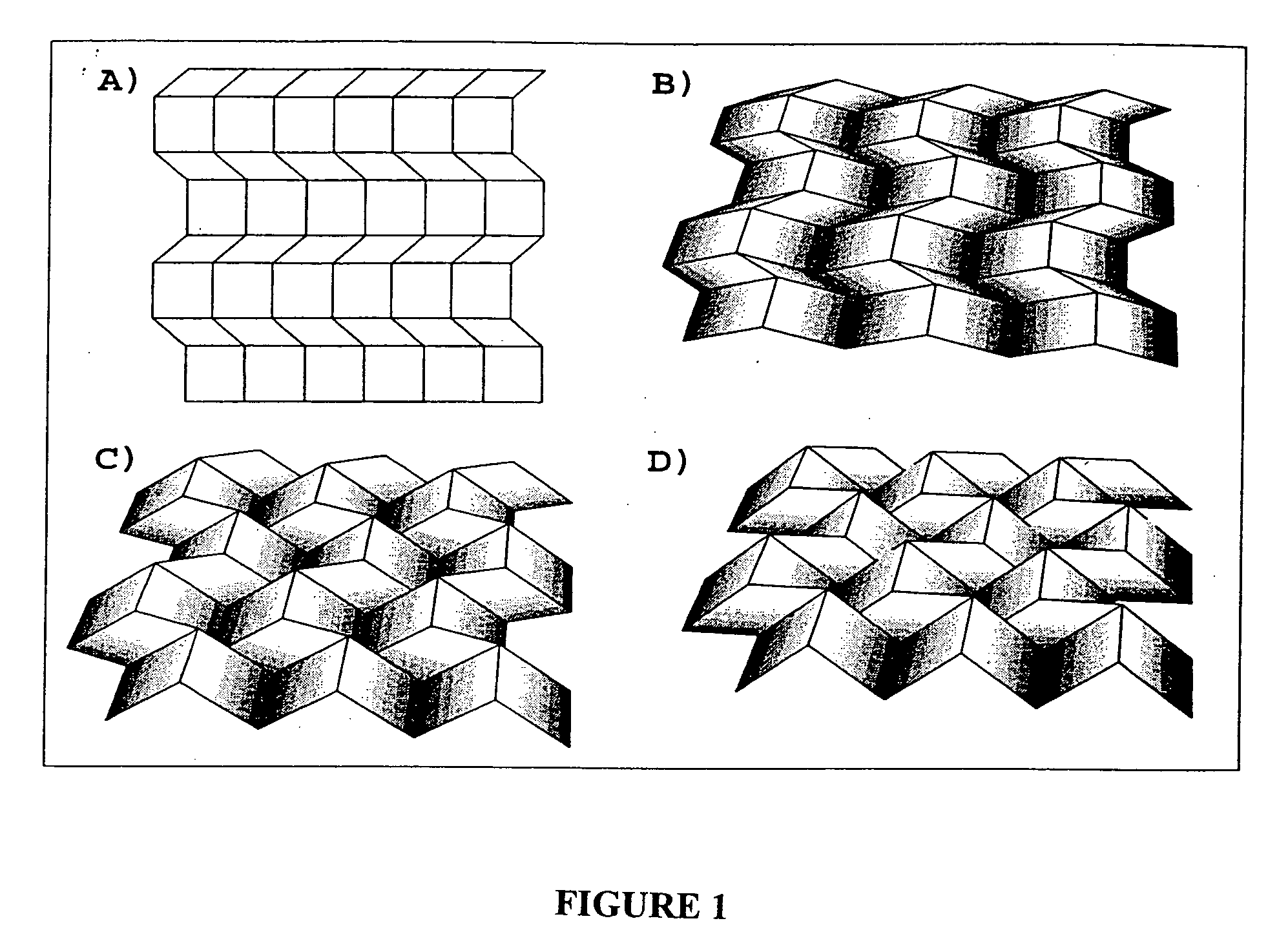Patterning technology for folded sheet structures
a technology of folding sheet and pattern, applied in the field of folding tessellations, can solve the problems of difficult use of a simple array structure, easy erroneous generalization of the folding process, and methods that cannot easily apply to the others
- Summary
- Abstract
- Description
- Claims
- Application Information
AI Technical Summary
Problems solved by technology
Method used
Image
Examples
Embodiment Construction
[0039] (Introduction and Definitions)
[0040] It should be understood by persons of ordinary skill in the art that the methods and procedures described here in Part I refer to folding an idealized infinitely thin plane. The plane is deformed, without changing any intrinsic lengths along the surface itself, to produce multi-faceted geometric structures. Any surface folded from a plane will have zero-curvature. This means the Jacobian of the Gauss map is zero on smooth regions, that the sum of the geodesic curvatures along an edge singularity (crease), when measured from the two sides of the edge, will total zero, and that at each vertex the cone angle will total 2π=360 degrees. The zero-curvature results from the fact that the material is not stretched by folding, and so the surface remains isometric to the plane.
[0041] In practice a sheet has finite thickness and may have intentional or unintentional distortions in superposition to the ideal process described here. The idealized zer...
PUM
 Login to View More
Login to View More Abstract
Description
Claims
Application Information
 Login to View More
Login to View More - R&D
- Intellectual Property
- Life Sciences
- Materials
- Tech Scout
- Unparalleled Data Quality
- Higher Quality Content
- 60% Fewer Hallucinations
Browse by: Latest US Patents, China's latest patents, Technical Efficacy Thesaurus, Application Domain, Technology Topic, Popular Technical Reports.
© 2025 PatSnap. All rights reserved.Legal|Privacy policy|Modern Slavery Act Transparency Statement|Sitemap|About US| Contact US: help@patsnap.com



